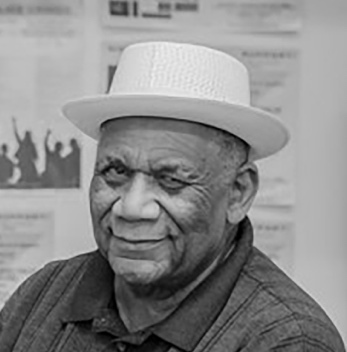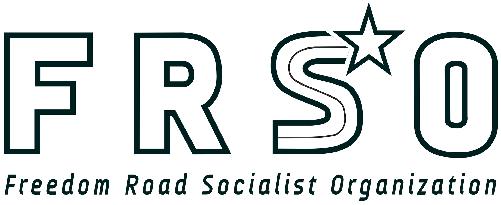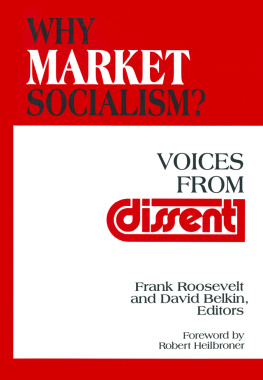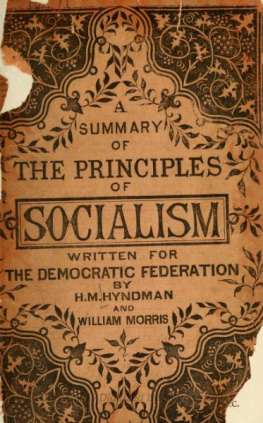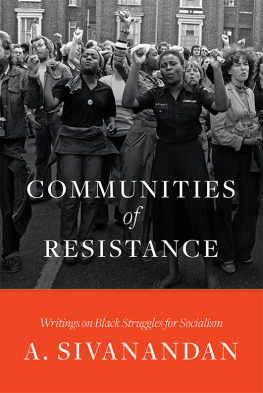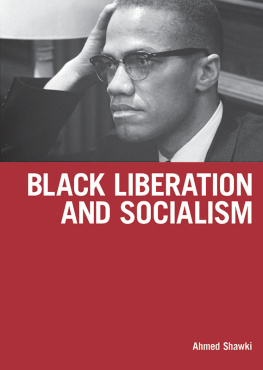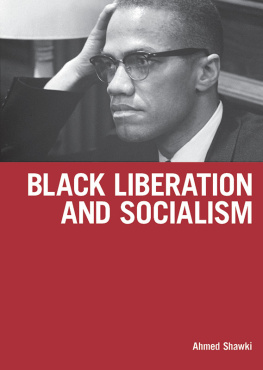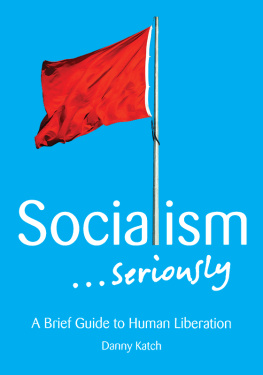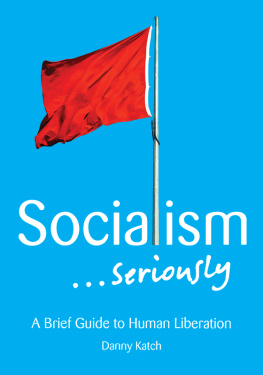MARXIST-LENINIST
PERSPECTIVES ON
BLACK LIBERATION
AND SOCIALISM
Other Works by Frank Chapman:
The Damned Dont Cry:
Pages from the Life of a Black Prisoner and Organizer
About the Author
Frank Chapman is a community organizer, Executive Director of the National Alliance Against Racist and Political Repression, Field Organizer of the Chicago Alliance Against Racist and Political Repression, and a member of the Central Committee of Freedom Road Socialist Organization. He is also a published writer, with articles on Truthout and Freedomways. In 2019, Frank published his first book, a memoir entitled The Damned Don't Cry: Pages from the Life of a Black Prisoner and Organizer.
MARXIST-LENINIST
PERSPECTIVES ON
BLACK LIBERATION
AND SOCIALISM
FRANK CHAPMAN
Copyright 2021 Freedom Road Socialist Organization
All rights reserved. No part of this book may be reproduced
or used in any manner without the prior written permission of the copyright owner, except for the use of brief quotations in a book review.
To request permissions, contact the publisher at info@frso.org.
ISBN: 978-0-578-85545-5
First paperback edition February 2021
Layout by Andy Koch
Individuals Pictured on Cover:
Top row from left: Ida B. Wells, W.E.B Du Bois, Martin Delany.
Middle row from left: Claudia Jones, Harry Haywood, Claudia Jones marching with the Young Communist League.
Bottom row from left: Karl Marx, Frederick Douglass, Harriet Tubman.
See Figures section for copyright information.
Published by
Freedom Road Socialist Organization
P.O. Box 582564
Minneapolis, MN
55458-2564 U.S.A.
frso.org
Contents
Introduction
The Communist International breaks once and for all with the traditions of the Second International which, in reality, only recognized the white race. The task of the Communist International is to emancipate the workers of the whole world. In its ranks are fraternally united men of all colorswhite, yellow and Blackthe toilers of the entire world.
- Second Congress of the Communist International:
Minutes and Proceedings
This book is about the historic relationship between two great revolutionary struggles: the struggle for Black Liberation and the struggle for socialism in the United States. Before these movements deliberately and consciously joined under the guiding hand of the Communist International there were continuous opportunities for joint struggles against the capitalist bosses, going back to the First International, during the Civil War and the decade that followed. So, what we propose to do in this book is trace the history of these developments going back to chattel slavery and coming up to the post-World War II period, and the emerging Civil Rights movement and its ramifications for setting the agenda for a new stage in the Black Liberation movement. All the while our focus will be on the role that the Communist Party played or didnt play in these developments.
The time is long past due for us, as Marxist-Leninists, to make a serious study and assessment of the historical relationship between the struggles for Black Liberation and socialism. It is one thing to say that communists never opportunistically took advantage of the question of national or racial oppression and quite another to demonstrate this based on the historical record. Just because the question can be raised in simple terms doesnt mean that it can be answered in simple terms.
What we aim to do in this book is focus on the Communist Party and its relationship to the struggle for Black Liberation. In doing so we start from saying Marxs premisethat labor cannot be free in a white skin if it is sold and branded in a Black skinis part of the revolutionary essence of Marxism. The moment the Communist Party emerges in history, it is a testament to the development of a class-conscious working class that sees the necessity of workers of the world uniting in the fight back against capitalism. Simultaneously, this movement recognizes that racism and national chauvinism are impediments to the development of class consciousness and therefore must be moved from the path of progress.
Marx, and later Lenin and Stalin, did not confuse the national question with the question of race. Fighting against racial prejudice is not a revolutionary struggle, per se. Fighting against national oppression is a revolutionary struggle. In this book we show how these distinctions developed historically by clearly demonstrating the formation, evolution and application of Communist Party policies to the oppression and the struggle for liberation of Black people in the United States of North America.
There have been two outstanding, pioneering works on the formation and evolution of Communist Party USA policies with regard to Black people. One is American Communism and Black Americans: A Documentary History, 1919-1929 , by Phillip Foner and James S. Allen. The other is The Cry Was Unity , by Mark Solomon. These books were written and edited by communist scholars and one communist theoretician, James Allen, and they focus sharply on the theoretical and practical contributions communists made from 1919 through 1934 to the struggle for Black Liberation. For me, these books are a goldmine of facts and profound Marxist analyses.
This book, however, sets forth and reiterates the thesis originally formulated by Lenin and embraced and developed by Stalin. And that is that the revolutionary content of Marxism-Leninism lies precisely in seeing the centrality of the national question in the struggle against imperialism and the struggle for socialism. As Marxist-Leninists we believe that revolutionary theory is always confronted with the task of answering the most urgent questions posed by the oppressed peoples and the working class in their struggle against the dehumanizing conditions of capitalism. In U.S. history there have been two great revolutionary struggles: the communist-led struggles of the workers movement for an end to exploitation and to eliminate all oppression, and the struggle of the oppressed nationalities for equality and liberation.
There have been and are various groups that consider themselves revolutionaries that claim to stand with the struggle for Black Liberation. This book is not about them. Its about Marx and the First International, the Third International and the Communist Party, U.S.A. and the legacy they have left us with on this all-important question. In this book we are lifting this legacy up because we believe there are lessons to be learned and scientific principles to be applied in rejuvenating the Black-Red bond, the fusion between Black liberation and the class struggle.
There are many national liberation struggles inside the borders of this country, most importantly those of the indigenous peoples who have been dispossessed of their land, forced to live on reservations and oppressed while being denied their sovereignty. There are the people of the Southwest, who developed as the oppressed Chicano nation after the U.S. conquest in the war with Mexico. There are also the colonized people of Puerto Rico, as well as other oppressed peoples inside the United States: Asians, Arabs and Latinos. However, while acknowledging and standing in solidarity with these national liberation movements, this book focuses on how the Communist International identified the struggle for Black Liberation as being strategically central to the struggle for working-class consciousness and socialism in the U.S. and Africa, especially in South Africa.
